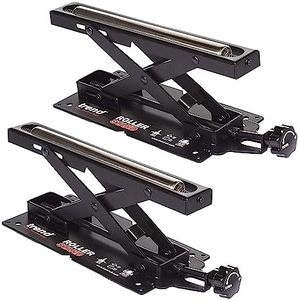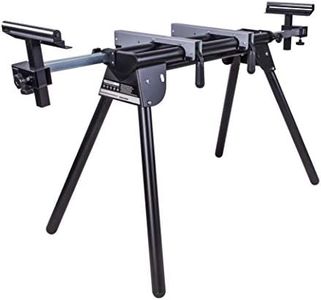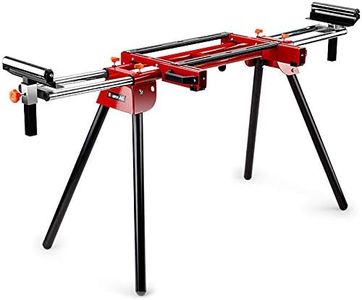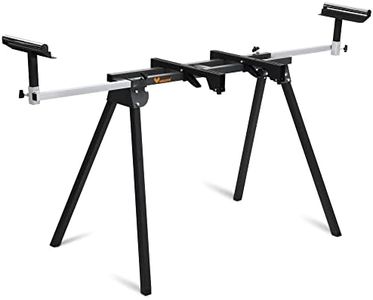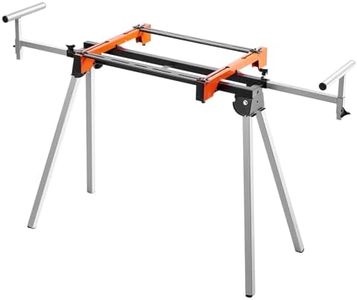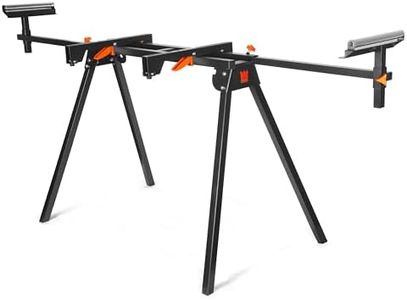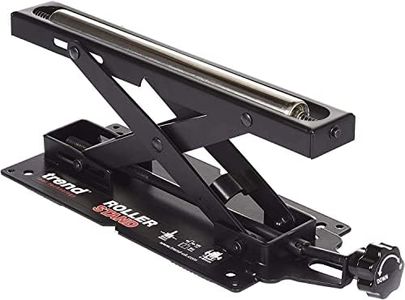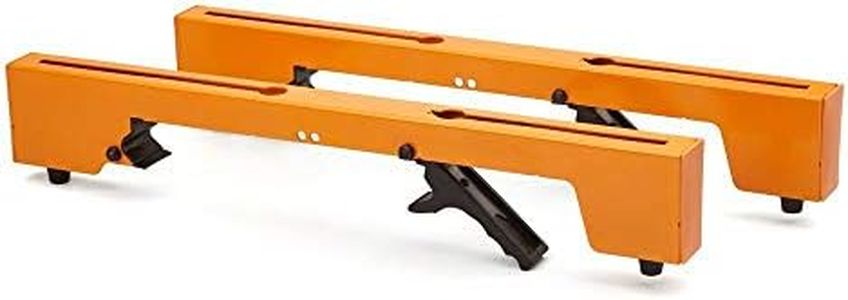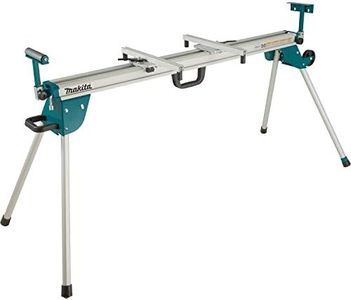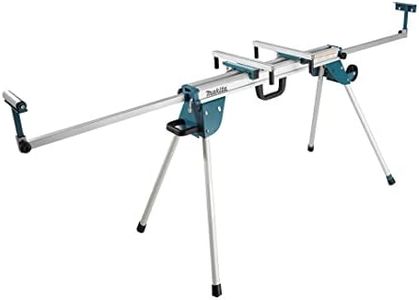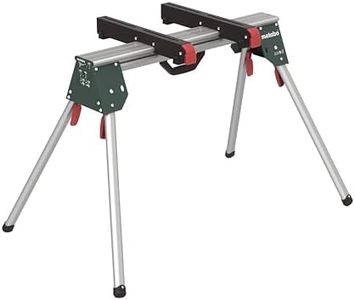We Use CookiesWe use cookies to enhance the security, performance,
functionality and for analytical and promotional activities. By continuing to browse this site you
are agreeing to our privacy policy
10 Best Miter Saw Stands
From leading brands and best sellers available on the web.Buying Guide for the Best Miter Saw Stands
Choosing the right miter saw stand can make your woodworking, carpentry, or home improvement projects much easier and safer. A miter saw stand not only provides stability for precise cuts but also improves portability and comfort. When picking a miter saw stand, think about how you'll use it, the size of your projects, the amount of space you have in your workspace, and how often you’ll move it around. Focusing on the key features of miter saw stands will help you make a choice that offers both convenience and durability for your needs.Weight CapacityWeight capacity tells you how much weight the stand can safely hold, including your miter saw and the material you’re cutting. If you regularly work with large or heavy wood pieces, you’ll need a stand with high weight capacity. Light-duty stands generally handle around 200-300 pounds and work well for smaller saws and lighter projects; medium-duty stands go up to 500 pounds for typical home or semi-professional use; heavy-duty stands exceed 500 pounds and suit professional environments or especially large saws. Always pick a stand that can comfortably support your saw and your largest typical project material to ensure safety and stability.
PortabilityPortability refers to how easy it is to move and transport your miter saw stand. Some stands are designed to be very portable, featuring foldable legs and built-in wheels, which are great if you need to move your stand between job sites or store it out of the way. Less portable stands are heavier and may lack wheels, making them better for a dedicated workshop where they rarely need to move. Consider whether you'll be working in one place or moving frequently—choose a portable stand for mobility, or a more stationary one for maximum sturdiness.
Material and Build QualityMaterial and build quality affect how sturdy, stable, and durable a miter saw stand is. Stands can be made from steel, aluminum, or a combination of both. Steel stands are heavier and more robust, often chosen for heavy-duty use, while aluminum stands are lighter and less likely to rust, making them good for easier movement and occasional outdoor use. If you need a long-lasting, stable option and don’t mind the extra weight, go for steel. If you prioritize ease of handling and occasional use, aluminum is a smart pick.
Adjustability and Extension ArmsAdjustability and extension arms allow you to support longer or larger pieces of material, helping you cut accurately and safely. Some stands can extend several feet on each side, making them ideal for long boards or trim. Basic stands may have fixed length arms (good for smaller workpieces), while premium models offer adjustable extensions that can hold very long materials. Choose based on the size of material you typically cut: if you work with long trim or large boards, extension arms are very helpful; for small hobby pieces, basic arms will suffice.
Mounting System CompatibilityThe mounting system determines how easily you can attach and detach your miter saw from the stand. Quick-release mounting systems are convenient if you use your saw in multiple locations or need to swap tools quickly. Some stands have universal mounts, fitting most brands and sizes of miter saws, while others are more brand-specific. Make sure the stand you’re considering will fit your saw securely, and think about whether fast mounting and removal are important for your workflow.
Height and ErgonomicsHeight and ergonomics refer to how comfortable the stand is to use over long periods. A stand with adjustable height allows you to set it for your body size and working style, reducing fatigue and back strain. Fixed-height stands may be limiting if they don’t match your preferred working height. If you plan to spend a lot of time at the saw or share the tool with others, an adjustable-height stand provides greater comfort and flexibility.
Stability FeaturesStability features like wide-set legs, anti-slip feet, and locking mechanisms ensure the stand stays secure during use. More advanced stands include leveling adjustments for uneven surfaces. If you work on different surfaces or outdoors, these extra stability features are especially useful to keep your workspace safe and steady.
